PlayStation.Blog |
- Ghost of Tsushima Director’s Cut arrives on PS5 and PS4 consoles on August 20
- (For Southeast Asia) Ghost of Tsushima Director’s Cut arrives on PS5 and PS4 Consoles on August 20
- Streets of Rage 4’s new Survival mode launches July 15: find out how it was created
- Bend water at will as the new wave-riding Warframe Yareli
- PlayStation Plus games for July: Call of Duty: Black Ops 4, WWE 2K Battlegrounds, A Plague Tale: Innocence
- Inside Capcom’s localization of The Great Ace Attorney Chronicles
| Ghost of Tsushima Director’s Cut arrives on PS5 and PS4 consoles on August 20 Posted: 01 Jul 2021 09:00 AM PDT What a year it's been! As we approach the one-year anniversary of Ghost of Tsushima, we are so grateful for the outpouring of love you've sent us since launch. It means so much to see how Jin's story has resonated with all of you, and we feel incredibly lucky to have such dedicated and supportive fans. We’ve thought a lot about how to expand Jin’s story, and we’ve also spent the last year poring over all of your feedback about how we could improve the experience of playing Ghost of Tsushima. We’ve been hard at work on a brand new edition of the game, which not only includes a new chapter in Jin's journey, but also some new updates that are a direct response to some of the community's most-requested features.  We're happy to announce that on August 20, we'll be releasing Ghost of Tsushima Director’s Cut on both PS5 and PS4 consoles. This new edition comes packed not only with the original game and every piece of additional content we've sold to date, but a brand-new adventure for Jin alongside a bunch of new features that we're excited to reveal.  Iki IslandIf you're a history buff, you may know that in addition to Tsushima, the neighboring island of Iki was also invaded during this time period. Today we're excited to reveal that a whole new chapter in Jin's journey is coming and will take place on Iki. In this new story, Jin travels to the island to investigate rumors of a Mongol presence. But soon, he finds himself caught up in events with deeply personal stakes that will force him to relive some traumatic moments from his past. We'll have more to share about the story of Iki soon, but today we can confirm that beyond a whole new story and new characters, this new island also features tons of new content including brand new environments to explore, new armor for Jin as well as his horse, new mini-games, new techniques, new enemy types, and much more. There are even new animals to pet! On both platforms, Director's Cut will also offer new Trophies to unlock for the new Iki content. A stunning vista from Iki Island PS5 exclusive featuresWhile Director's Cut players on both PS4 and PS5 will be able to experience the Iki Island content, PlayStation 5 players will have access to a few additional new features. We've heard your feedback about the lack of Japanese lip sync in the original version of Ghost of Tsushima, and it's something we worked hard to address in this new release. Thanks to the PS5's ability to render cinematics in real time, cutscenes in Ghost of Tsushima and on Iki Island on PS5 will now offer lip sync for Japanese voice over. We're also happy to confirm that Ghost of Tsushima, Ghost of Tsushima: Legends, and the new Iki Island expansion will all take advantage of haptic feedback and adaptive triggers in the Director's Cut. There will also be enhancements to 3D audio* on PS5, as well as drastically improved load times, 4K resolution options** and framerates targeting 60 FPS. Above screenshots from Ghost of Tsushima on PS5 Transferring your progressIf you already own Ghost of Tsushima on PS4, you'll be able to transfer your save to PS5 to pick up where you left off. For new players, the new Iki Island content will be available beginning in Act 2 of Ghost of Tsushima, after you've made your way to the Toyotama region. Jin explores the beautiful Iki Island Other updatesAlongside the Director’s Cut, anyone who already owns Ghost of Tsushima will be able to download a patch containing some new updates. Once again, many of these updates are directly thanks to the constant stream of feedback you've been providing us since launch, which we're extremely appreciative of. All players will receive a patch with some new accessibility options for alternate controller layouts, as well as the option to enable a target lock-on during combat. And for the person who tweets at us all the time asking for an option to hide your quiver during gameplay: yes, we'll be adding that, too! Finally, for Ghost of Tsushima: Legends fans, we'll also be releasing some new updates, including an all-new mode that we're excited to detail in the weeks to come. All Ghost of Tsushima: Legends*** updates will be available at no additional charge to owners of any version of Ghost of Tsushima on either platform. Pre-orders and upgradesGhost of Tsushima Director’s Cut will launch on August 20 for $69.99 USD on PS5 and $59.99 USD on PS4. You'll be able to pre-order digitally at PlayStation Store, or physical versions from various retailers. If you pre-order at participating retailers, you'll receive a digital mini soundtrack with tracks from the original Ghost of Tsushima as well as two new songs from Iki Island, and a digital art book featuring a selection of art from Ghost of Tsushima as well as 10 new pieces of Iki Island concept art. Pre-order at PS Store any time before launch and you'll get access to download the PS4 version of Ghost of Tsushima immediately, so you can start experiencing the main game early and transfer your progress to pick up where you left off when the Director's Cut launches in August. Jin pauses to practice his flute on Iki Island If you already own Ghost of Tsushima on PS4:
Starting on August 20:
Additional details about upgrades will be available at PlayStation Store closer to launch. Thank you again to everyone for making this such a special year. We can't wait to share more about Iki Island with you soon! *3D audio with stereo headphones (analog or USB) **4K display required ***PlayStation Plus membership required for online multiplayer. PlayStation Plus membership is subject to a recurring subscription fee taken automatically until cancellation. Age restrictions apply. Full terms: play.st/PSPlusTerms | ||||||||||||||||||||||
| (For Southeast Asia) Ghost of Tsushima Director’s Cut arrives on PS5 and PS4 Consoles on August 20 Posted: 01 Jul 2021 09:00 AM PDT What a year it's been! As we approach the one-year anniversary of Ghost of Tsushima, we are so grateful for the outpouring of love you've sent us since launch. It means so much to see how Jin's story has resonated with all of you, and we feel incredibly lucky to have such dedicated and supportive fans. We’ve thought a lot about how to expand Jin’s story, and we’ve also spent the last year poring over all of your feedback about how we could improve the experience of playing Ghost of Tsushima. We’ve been hard at work on a brand new edition of the game, which not only includes a new chapter in Jin's journey, but also some new updates that are a direct response to some of the community's most-requested features. We're happy to announce that on August 20, we'll be releasing Ghost of Tsushima Director’s Cut on both PS5 and PS4 consoles. This new edition comes packed not only with the original game and every piece of additional content we've released to date, but a brand-new adventure for Jin alongside a bunch of new features that we're excited to reveal.  Iki IslandIf you're a history buff, you may know that in addition to Tsushima, the neighboring island of Iki was also invaded during this time period. Today we're excited to reveal that a whole new chapter in Jin's journey is coming and will take place on Iki. In this new story, Jin travels to the island to investigate rumors of a Mongol presence. But soon, he finds himself caught up in events with deeply personal stakes that will force him to relive some traumatic moments from his past. We'll have more to share about the story of Iki soon, but today we can confirm that beyond a whole new story and new characters, this new island also features tons of new content including brand new environments to explore, new armor for Jin as well as his horse, new mini-games, new techniques, new enemy types, and much more. There are even new animals to pet! On both platforms, Director's Cut will also offer new Trophies to unlock for the new Iki content. A stunning vista from Iki Island PS5 exclusive featuresWhile Director's Cut players on both PS4 and PS5 will be able to experience the Iki Island content, PlayStation 5 players will have access to a few additional new features. We've heard your feedback about the lack of Japanese lip sync in the original version of Ghost of Tsushima, and it's something we worked hard to address in this new release. Thanks to the PS5's ability to render cinematics in real time, cutscenes in Ghost of Tsushima and on Iki Island on PS5 will now offer lip sync for Japanese voice over. We're also happy to confirm that Ghost of Tsushima, Ghost of Tsushima: Legends, and the new Iki Island expansion will all take advantage of haptic feedback and adaptive triggers in the Director's Cut. There will also be enhancements to 3D audio* on PS5, as well as drastically improved load times, 4K resolution options** and framerates targeting 60 FPS. Above screenshots from Ghost of Tsushima on PS5 Transferring your progressIf you already own Ghost of Tsushima on PS4, you'll be able to transfer your save to PS5 to pick up where you left off. For new players, the new Iki Island content will be available beginning in Act 2 of Ghost of Tsushima, after you've made your way to the Toyotama region. Jin explores the beautiful Iki Island Other updatesAlongside the Director’s Cut, anyone who already owns Ghost of Tsushima will be able to download a patch containing some new updates. Once again, many of these updates are directly thanks to the constant stream of feedback you've been providing us since launch, which we're extremely appreciative of. All players will receive a patch with some new photo mode updates, new accessibility options for controller remapping, as well as the option to enable a target lock-on during combat. And for the person who tweets at us all the time asking for an option to hide your quiver during gameplay: yes, we'll be adding that, too! Finally, for Ghost of Tsushima: Legends fans, we'll also be releasing some new updates, including an all-new mode that we're excited to detail in the weeks to come. All Ghost of Tsushima: Legends*** updates will be available at no additional charge to owners of any version of Ghost of Tsushima on either platform. Pre-orders and upgradesGhost of Tsushima Director’s Cut will launch on August 20 for SGD97.90 / MYR299 / IDR1,029,000 / THB2,290 / PHP3,490 on PS5 and SGD79.90 / MYR249 / IDR879,000 / THB1,990 / PHP2,990 on PS4. You'll be able to pre-order digitally at PlayStation Store, or physical versions from various retailers. If you pre-order at participating retailers, you'll receive a digital mini soundtrack with tracks from the original Ghost of Tsushima as well as two new songs from Iki Island, and a digital art book featuring a selection of art from Ghost of Tsushima as well as 10 new pieces of Iki Island concept art. Pre-order at PS Store any time before launch and you'll get access to download the PS4 version of Ghost of Tsushima immediately, so you can start experiencing the main game early and transfer your progress to pick up where you left off when the Director's Cut launches in August. Jin pauses to practice his flute on Iki Island If you already own Ghost of Tsushima on PS4:
Starting on August 20:
Additional details about upgrades will be available at PlayStation Store closer to launch. Thank you again to everyone for making this such a special year. We can't wait to share more about Iki Island with you soon! *3D audio with stereo headphones (analog or USB) **4K display required ***PlayStation Plus membership required for online multiplayer. PlayStation Plus membership is subject to a recurring subscription fee taken automatically until cancellation. Age restrictions apply. Full terms: play.st/PSPlusTerms | ||||||||||||||||||||||
| Streets of Rage 4’s new Survival mode launches July 15: find out how it was created Posted: 01 Jul 2021 06:01 AM PDT Bonjour! I am Jordi Asensio, Lead Game Designer on Streets of Rage 4. I worked on the game's design system, character integration, level design, and game modes. Today I would like to introduce the new Survival mode, as well as the new characters that will be playable in our DLC, Mr. X Nightmare – available on July 15.  Streets of Rage 4 developers offer an insightful walkthrough of Mr. X Nightmare's Survival mode in a new episode of PlayStation Underground. Introducing Streets of Rage 4's Survival modeWe always wanted a Survival mode for Streets of Rage 4, but we decided to focus on the campaign first so as not to sidetrack production. It was a tough decision, but we knew it was the right one. I also wanted to use this opportunity to inject a sense of power progression into our core gameplay experience , without overloading players with overelaborate RPG elements that'd negatively impact the game's rhythm. That's how the idea to use Perks came in. We made sure that our first Perks were built on existing gameplay systems. This early batch was pretty simple: increasing the character's strength, defense, and speed, and giving them weapons. We then added more unusual stuff – elementary effects (fire, thunder, poison). Once we moved forward with this concept, we added new ideas – for example, cursed Perks with both positive and negative effects. We also identified synergies between Perks to create surprising combinations. After this came months of testing and balancing. Estel hits hard. Facing the simulationIn Streets of Rage 4's Survival mode, the player uses the remnants of Mister X's brain to enter a simulation. This simulation produces waves of enemies in trap-filled arenas. After a wave is beaten, you can choose between two Perks that remain active during your entire run. There's no selectable difficulty. We instead designed runs around three phases: early, mid, and endgame. To pull this off, we worked diligently on the relationship between the difficulty curve and player power. In the early game, the player starts shaping their build and approach to the run based on Perk selection. The average player will face a good challenge, while more advanced players will focus on building momentum for what is to come, thanks to combos and scoring which rewards players with Star moves. Midgame is where the curves synchronize – the player's skill will be determinant here. Endgame is where a player's skill and use of perks will determine how long they can survive.. In order to keep every session engaging, we had to create a system to generate enemy waves – one where randomness helps create crazy situations but still built up on specific rules. Enemies are divided into categories: Fodder goons: enemies that occupy the screen more by their numbers than their strength. Advance goons: enemies with specific attacks. You'll need to use smarts to beat them. Elite goons: these are game-changers requiring you to adapt your strategy and not put a foot wrong. With these in place, the game can design waves just like we did for the main campaign and create interesting combinations: 4 fodder goons + 2 advanced, 8 fodders + 1 elite, 2 elites, etc. Each enemy has a rank value, every level a value cap (as example, level 4's rank cap is 400).To keep advanced players challenged, procedural generation can exceed that cap. A rubberband system balances things though: hit 450 in a level and the next starts at -50. The reverse is true, so be careful! Gladiator biome variants Creating new levels and new enemiesThe mode features arenas that are completely new. We wanted to create a feeling of oppression, that sense of survival, pushing players to their limits. We brainstormed new biomes and unique traps for each. Concepts for traps in the factory biome Having new playable characters but no new enemies would have been a missed opportunity! So while the art team was busy crafting all of the playable characters, I decided to select sprites from the original games. A total of 30 retro enemies are integrated into SoR4, including a couple of bosses that still give players nightmares. Even though I tried to align most of them to the spirit of the original game's AI, they still had to be adapted to the SoR4 game system. For example, some retro enemies kept using invincible attacks, so we replaced them with armor attacks. This means that they can absorb a few punches while still seeing their health bar impacted. Adding new playable characters and new movesAs soon as the team got the green light for a DLC, we started working on Max, Shiva, and Estel. Demands from fans were very strong for this trio and we already had a head-start since their character design was done and some animations were already integrated.
For Estel, we had carte blanche so we decided to give her a unique, very direct and hard-hitting style compared to the other two characters. We also added explosives and incapacitating grenades to her regular move list. I wanted to build the Shiva character around his combos.. For Shiva's alternative moves list, I was inspired by his special attack as a boss in Streets of Rage 4. I was able to create a lot of techniques based on the creation of clones. Teaching classic characters new tricksPerks are a key element of rogue-lite games, and we searched for inspiration and elements that could be used in the SoR4 game experience. After the release, I created for fun an alternate version of Axel with a brand-new set of moves using animations and art that already existed. I then added some FX on it. This is how the idea came about to permanently unlock new moves as a reward in Survival mode. Since you can fully customize your character's move set, this DLC gives players plenty to discover. And once you've unlocked everything, you'll want to try every combination yourself in order to get the highest score. Streets of Rage 4: Mr. X Nightmare launches July 15 on PlayStation 4.  | ||||||||||||||||||||||
| Bend water at will as the new wave-riding Warframe Yareli Posted: 30 Jun 2021 11:00 AM PDT Beginning next week, Warframe players can battle against their very own high-tech adversary known as the Sisters of Parvos in the new Corpus Lich system, help the new Warframe Yareli save the Ventkids of Fortuna, and collect an expansive amount of new loot in the upcoming Sisters of Parvos game update. Coming to PlayStation 5 and PlayStation 4 on July 6. Here's a quick preview of what we've been up to and some of the new content being released with this game update:
 Confront the Sisters of Parvos as a new water-bending WarframeIn Warframe's next game update, we'll be extending the storyline of the greedy Parvos Granum and his latest creations, the Sisters of Parvos. Following her introduction in our most recent game update, Call of the Tempestarii, the new adversary, Vala, will return with the "sisters Parvos never had" as well as their new mechanized Hounds. Sisters can be encountered through our new Corpus Lich System which will include boss battles and rewards. Additionally, with the aggressive Corpus expansion led by Parvos, players will be called upon to return to the open-world hub of Fortuna and complete challenges across the Orb Vallis to protect the vulnerable Ventkids and earn the latest Warframe, Yareli. The new wave-riding, orphan-saving, comic hero of Fortuna, YareliBeginning next week players will be able to unlock Yareli, the 47th Warframe we've released and one of our most accessible yet. Yareli is legendary in Fortuna for her selfless heroism against the oppressive Corpus regime. She strikes fear into those who oppress using an arsenal of graceful – yet powerful – aquatic Abilities. With Yareli, players can wield the powers of water to create blades of ice, powerful geysers and even an aqua board to traverse the battlefield. New players will enjoy the fast, fun, cooperative action of Warframe as they level-up and progress towards unlocking Fortuna, so they too can quickly earn Yareli. Active players will return to the Orb Vallis and complete challenges to earn Yareli by collecting comic resources that reveal more of her story. To ensure that as many players as possible can ride the wave when Sisters of Parvos releases, we suggest players complete Vox Solaris before the update to unlock K-Drive functionality. Unique to Yareli, her second Ability will actually summon her own K-Drive, Merulina — a living sea creature. The selfless savior protecting the Ventkids from Corpus OppressionWe know how much our players enjoy the open world of the Orb Vallis, and it's perfectly placed in our universe so that even new players can get in on the action. Players who have already completed Vox Solaris will receive an invitation from Roky to unlock the Waverider Quest, a comic-based series of K-Drive challenges in the Orb Vallis that will award Yareli's Main Blueprint. Research the rest of her components from the new Bash Lab Dojo Room and bring the Ventkids' beloved hero to life! Fun-flying, free-wheeling K-Drives in the open world of Orb VallisPlayers should spend some time mastering the K-Drive by advancing their riding skills so that they can accomplish the new open-world stunt challenges in the Orb Vallis and unlock Yareli as quickly as possible. Warframe is known for the Bullet Jump, and sure, it's a blast, but the K-Drive adds an exhilarating dimension to movement offering additional combat and traversal options… not to mention, it's fun to bust out a trick and impress friends every once in a while. With a K-Drive, players can shred their way through the vast lands of the Orb Vallis with force, speed and now… style. Yareli's Merulina is part of her unique playstyle, and knowing how to handle a K-Drive on the battlefield will definitely give players the opportunity to combine movement and Abilities in all-new ways. Confront a new state of the art AdversaryFor our active players wanting new challenges and new loot to customize and personalize their experience, the new Corpus Lich System brings more boss battles and with it, more rewards. True to their high-tech status, the Sisters of Parvos have been outfitted with eight of the most advanced Weapons in the Corpus arsenal for players to unlock. See you on the slopes, Tenno. | ||||||||||||||||||||||
| Posted: 30 Jun 2021 08:30 AM PDT The PlayStation Plus July lineup packs in thrilling firefights, wrestling superstars, intense horror, and martial arts action. Whether your tastes lie with first-person shooters (Call of Duty: Black Ops 4), over the top arcade punch ups (WWE 2K Battlegrounds), third-person survival horror (A Plague Tale: Innocence) or battling your way up global leaderboards (Virtua Fighter 5 Ultimate Showdown), PlayStation Plus next month has something for you. Call of Duty: Black Ops 4, WWE 2K Battlegrounds, and A Plague Tale: Innocence are available to add to your console library starting Tuesday, July 6 until Monday, August 2. And if you missed it last month, Virtua Fighter is available on PlayStation Plus for a second month, and is available to PlayStation Plus members until Monday, August 2. Let's take a closer look at each. 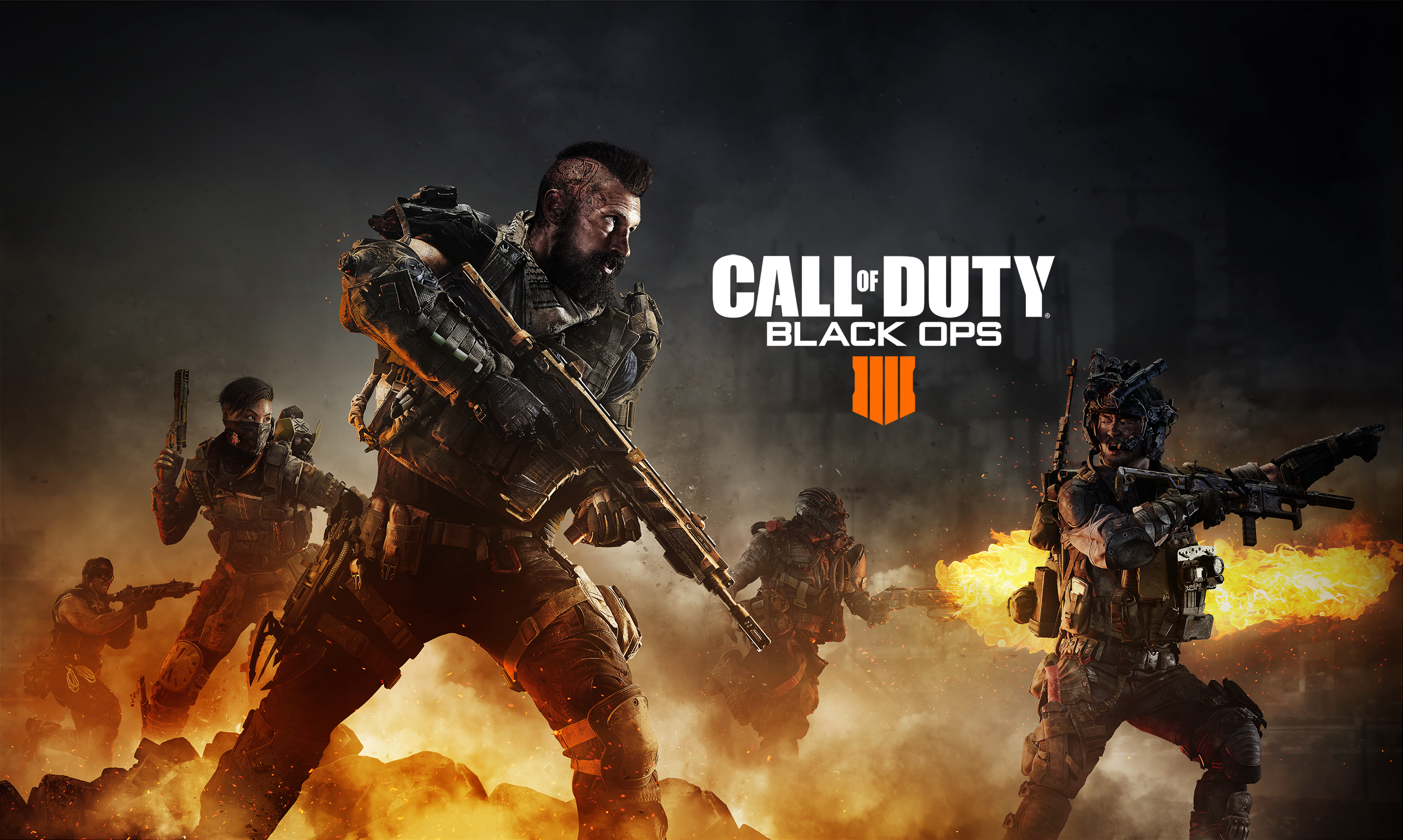 Call of Duty: Black Ops 4 | PS4Call of Duty: Black Ops 4 delivers a trio of action-packed multiplayer-modes* for first-person shooter fans. First there's the series' iconic multiplayer experience pitting players against each other worldwide. Second, is the fan-favourite Zombies experience, letting you and friends battle the undead. Last but not least is Blackout, an intense large-map mode inspired by battle royale. Blackout brings together characters, locations, weapons and gear from across the series in all-out survival combat – all with a unique Black Ops twist. 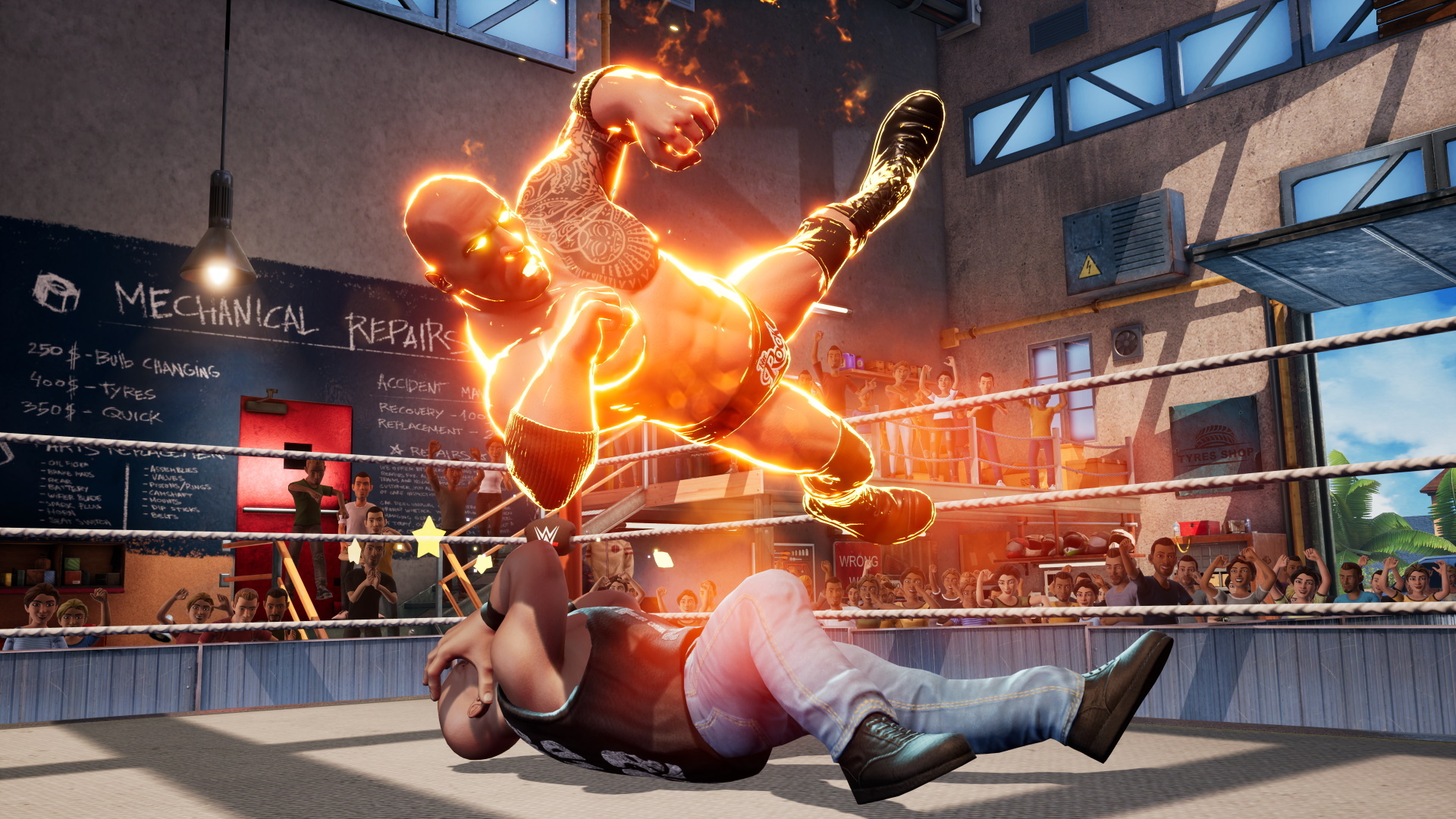 WWE 2K Battlegrounds | PS4The world of WWE is your battleground with over-the-top, arcade action as your favorite WWE Superstars and Legends battle in interactive environments around the world. Play through a new story mode while unlocking unique characters and Battlegrounds. Compete using special abilities and power-ups in match types like Steel Cage, Royal Rumble, and more! Compete in Online Tournaments or stake your claim as King of the Battleground against players from around the world!* Plus, battle it out in local multiplayer and dominate your friends. 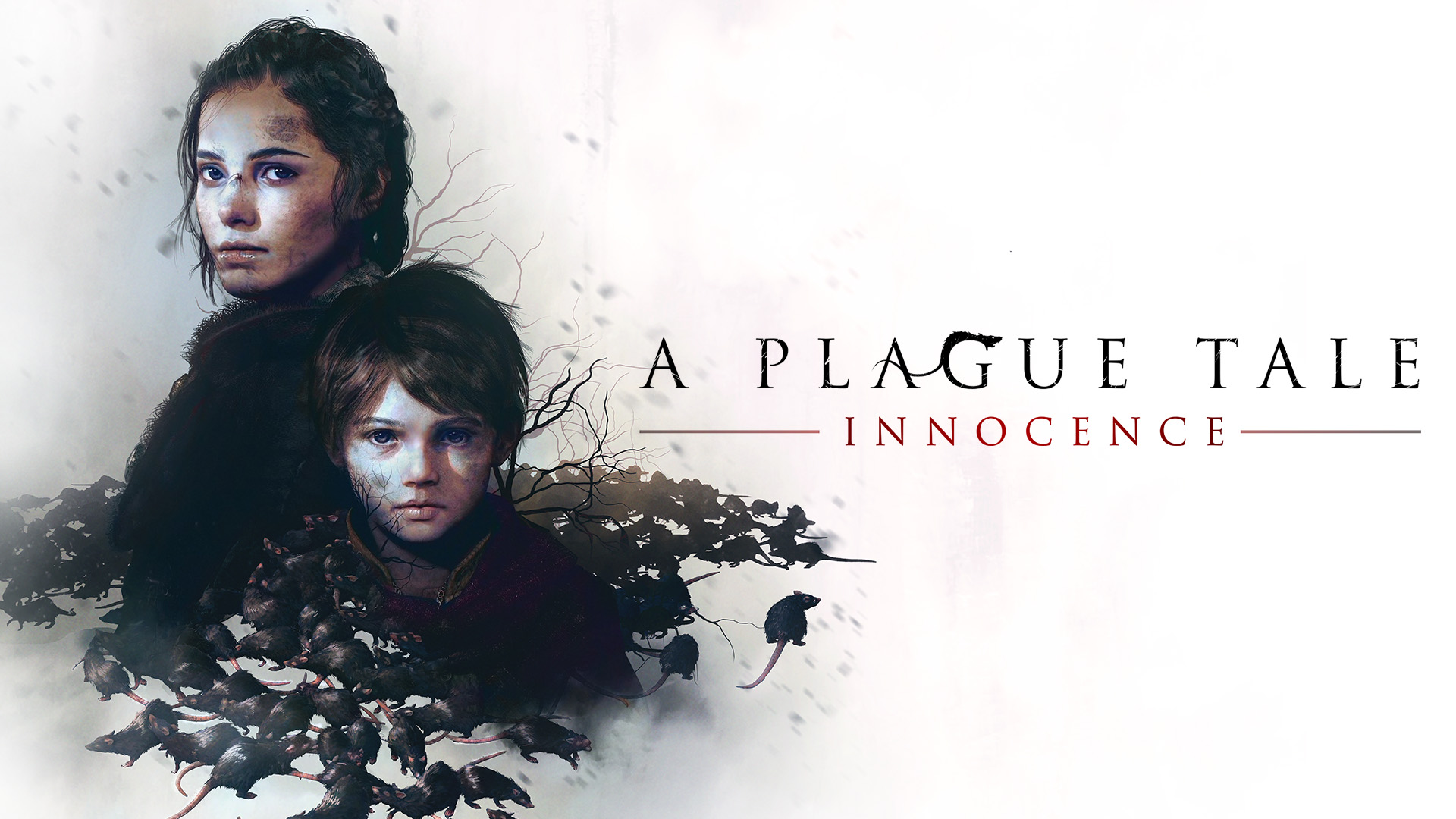 A Plague Tale: Innocence | PS5 version only**The critically acclaimed adventure releases on PS5 with 4K native resolution***, targeted 60 FPS, highly improved visuals, and fast loading – and makes its debut onto PlayStation Plus. Follow the tale of young Amicia and her little brother Hugo, in a heartrending journey through the darkest hours of history. Hunted by Inquisition soldiers and surrounded by unstoppable swarms of rats, Amicia and Hugo will come to know and trust each other. As they struggle to survive against overwhelming odds, they will fight to find purpose in this brutal, unforgiving world. These three new releases are also joined by Virtua Fighter 5 Ultimate Showdown, as Sega's beat'em up enjoys its second month on PlayStation Plus. If you missed it in June, here's what you need to know: 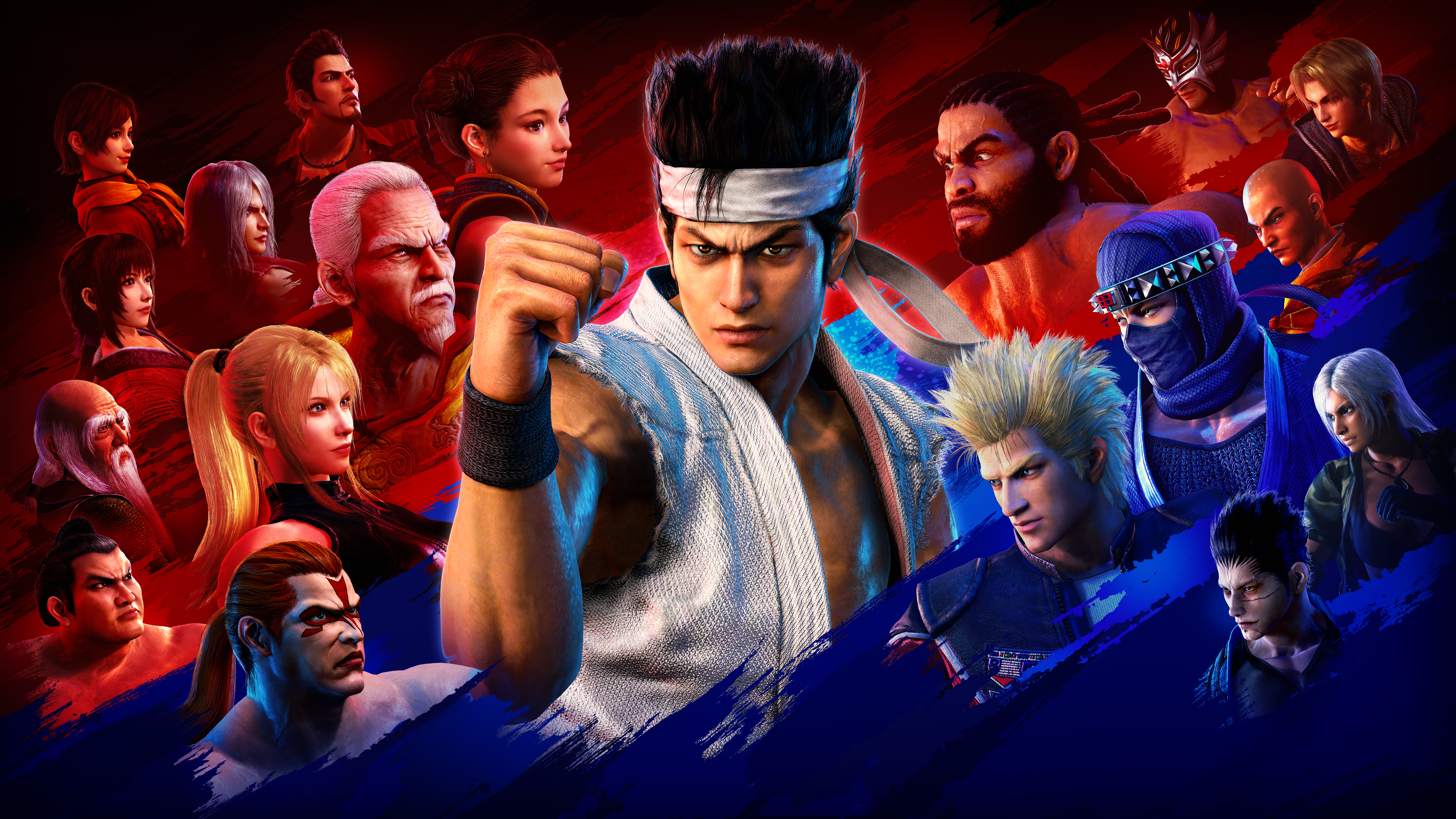 Virtua Fighter 5 Ultimate Showdown | PS4Sega's iconic one-on-one battler gets remade for a new generation by Yakuza and Judgment developer Ryu Ga Gotoku Studio. This console exclusive allows both VF veterans and newcomers to experience the intense martial arts combat, deep strategy, and intricately balanced gameplay of the groundbreaking 3D fighter in stunning HD. New online features* – like custom tournaments supporting up to 16 players and live spectating – join classic modes like Rank Match, Arcade, and VF5's famously robust Training to deliver the definitive Virtua Fighter experience. Last chance to download PlayStation Plus games for JuneAs some games join, others leave. You've until Monday July 5 to add Star Wars: Squadrons and Operation: Tango to your game library. Make sure not to miss either! *Online multiplayer requires PS Plus subscription; fees recur until cancelled. Age restrictions apply. Full terms: play.st/PSPlusTerms. **Benefit not applicable for A Plague Tale: Innocence on PS4 consoles. ***4K display required. | ||||||||||||||||||||||
| Inside Capcom’s localization of The Great Ace Attorney Chronicles Posted: 30 Jun 2021 06:00 AM PDT Helloooo, PlayStation fans! It's Janet Hsu, localisation director of The Great Ace Attorney Chronicles, here today to talk a little about the localisation of this long-awaited game that I've been wanting to share with you for so many years. Never in my wildest dreams did I think we'd have the privilege to bring out such a beautiful, HD version of this title to the PlayStation 4, but here we are! It's truly been an honour for me. My guiding philosophy for the localisation of this title was "Authentic, yet Accessible", and I thought I'd expand on that a little more here. I've long thought that unlike medical or legal translation, translating and localising for video games is a sort of art: a balancing act of faithfulness to the literal words of the original text and correctly conveying the intentions behind them in a way that the audience can connect with. This also means each game – or any piece of entertainment media – has its own needs and limitations: What sort of game is it? Action? Adventure? Who is the intended audience and what should they be expected to know going in? etc. As with any form of art, what's considered "best practices" also changes over time as they are based on contemporary cultural sensibilities. Therefore, the concept of "Authentic, yet Accessible" can mean different things in different contexts. For example, I was reading an English translation of real life Japanese author Soseki Natsume's I Am a Cat the other day and I was taken aback by one of its feline characters talking about his owner making "a penny a tail" and having collected "about half a crown" off of his hard work catching rats. But the British English translation I was reading is from 1972 and was primarily for a Western audience with no access to the internet. Therefore, it would seem that back then, even simple things like monetary values were localised to ensure that the reader could more readily grasp a sense of the amount of money being discussed, despite the story's Japanese setting. And while this is something most translators wouldn't do nowadays because best practices have changed over time, the funny thing is, even with the slight loss of authenticity, converting Japanese monetary values into British ones has held up remarkably well in one respect as a localisation choice: it made the English translation more accessible to me as a reader in the year 2021 – over 40 years later – because of my familiarity with Victorian monetary values (thanks, period dramas!). Having read Soseki's original 1905 novel in Japanese as well, I can tell you I had no idea how much 5 sen or 1 yen 50 sen is worth off the top of my head, and neither does the average Japanese person it would seem. To me, this is a case of favouring accessibility over authenticity, which is certainly one way to assign weight to these two opposing elements. These sorts of balancing decisions are made all the time whenever a piece of work is translated, let alone localized. But I have a feeling that even Soseki himself wouldn't have minded these sorts of liberties being taken with his work. In fact, there's a pretty famous story about our favourite moustached cat novelist and his own translation philosophy! In Episode 6 of the Escapades, we have this recounting of the well-known tale.  So what's wrong with the answer Ryunosuke provided? Well, let's have Professor Soseki explain his thinking to us.  And as Sholmes rightly points out, 'Tsuki ga kirei desu ne' is hardly what your textbook would tell you to translate 'I love you' as. Still, there is a very good reason. "Bad Sholmes!" indeed! Because the underlying message Soseki was trying to convey is that in translating something, you have to take the cultural sensibilities of the target language into account as well. In this case, the more suitable "localisation" in his mind is the more oblique and poetic one that better aligns with the Japanese spirit of the time in its rendering of such a declaration. In doing so, he not only preserved the romantic nature of the phrase but also made it accessible in a way that his fellow countrymen would prefer. So you see, he too would have to have made such calculations between authenticity and accessibility in his translations over 100 years ago. But wait! That's not all there is to this particular in-game passage. So let's buckle up for a little "locali-ception"! You'll notice that Ryunosuke's answer was '"Aishiteiru" or "Suki desu"', but as those of you who are already familiar with the legend of Soseki and the Beautiful Moon know, it's often said that the translation he told his student to use is 我、君ヲ愛ス (Ware, kimi wo aisu). In fact, that's what the original Japanese text of this scene said. So then, why did we even change that in the English if it's meant to be a Japanese phrase? Well, this is because of two big factors: 1) To use a phrase that some people in our audience might possibly recognize thanks to anime or Basic Japanese 101 class as opposed to something no one would know unless they've had extensive Japanese training (or were a Soseki mega-fan) 2) To set up two big wordplays that are coming up by defining these words in advance for people who don't know any Japanese at all In my greed, I wanted to make sure that the phrase was still Japanese to keep it as authentic as possible. But with the direction the dialogue ultimately goes in, it wouldn't have mattered what I wanted if I couldn't figure out a way to translate this passage for people with no knowledge of Japanese; it was also important to me that they, too, could understand the little jab Sholmes takes at 'suki' and 'tsuki' by saying it's merely a clever bit of wordplay, which was a joke in the original Japanese text. So I used Ryunosuke's line as a way to set up what's to come. As for the 'aishiteiru', well that comes up again a little bit later in the Escapade… (This entire episode was a nightmare of an exercise in localisation. I even had to sketch out how all the wordplay is linked and how to tackle them beforehand. Why did you do this to me Takumi-saaaan…?!? ><; ) But this also brings up an interesting dilemma I had this time around. The mainline games feature a character by the name of Phoenix Wright, but this new game's protagonist didn't even have an English name yet. What was I to do? On the one hand, I could've continued with the approach I'd used for the mainline games and gone the complete localisation route, completely favouring accessibility over authenticity, but instead, I chose to go in almost the complete opposite direction and favour authenticity over accessibility because the needs of the narrative willed it so. Here was a character whose identity and story is entirely grounded in his Japanese nationality. So while it was already my preference to keep him Japanese, the situation left me with no doubt in my mind that he had to be Ryunosuke Naruhodo.  With his name squared away, the next question to answer was, "Will he still be Phoenix's ancestor?" to which my immediate response was, "Yes, of course!" Perhaps you're wondering how I could reconcile the two characters' backgrounds so easily, but as an Asian American, the answer couldn't be plainer! Why couldn't Phoenix have Japanese ancestry when he lives in such a multicultural country in the first place? In a way, in reconciling the American setting of the first game with the Japanese elements I had to keep in the subsequent games, I suppose the America of Ace Attorney has become something of a more idealized version of itself for me, and maybe there's a part of me that wishes I could've grown up in such a place as well, as it reflects a bit of my lived experiences in its unique blend of East meets West. As you can see from just these few examples, this is why I find it very hard to directly compare one localisation's approach to another. Due to external factors surrounding the localisation itself such as the target language and culture or the era in which it's being made, and the philosophy of the translator or localiser, each localisation is crafted in a way that best caters to its goals and needs. It's the reason why things like the American versions (or localisations, if you will) of TVshows like The Office and Shameless exist, despite the originals being in English, and why modern translations of Shakespeare exists since time has changed the English language itself so much that his works have become inaccessible in some ways to the average modern reader. But enough philosophy! Let's take a look at a few more in-game examples! 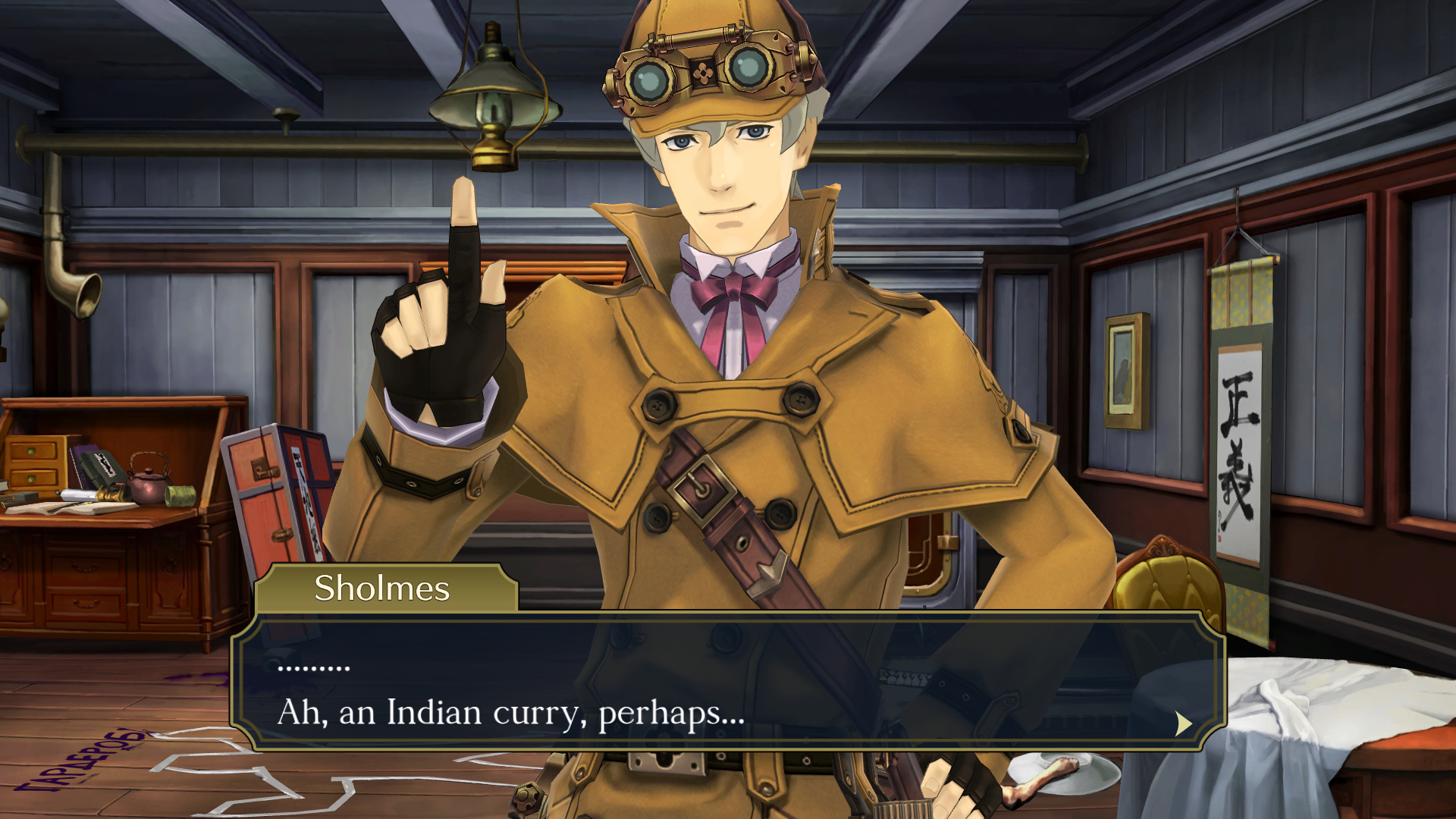
So this is an interesting example of localising intent while staying authentic to the story and character. In the Japanese, Sholmes guesses that perhaps they'll be having curry rice for lunch. However, the translators flagged this as strange since curry rice is what we in the West would call a distinctly Japanese dish. It also seemed out of character for Sholmes to reference it so offhandedly as an Englishman. The thing is, curry rice has a bit of an interesting history: it was the British who first introduced Indian curry to Japan in the mid-19th century, but it didn't become the popular dish it is today until the early 20th century after its formal adoption by the Japanese army and navy. That's when it really took off and evolved into the altogether Japanese dish it is today. So when a Japanese player reads Sholmes saying he deduces that today's lunch will be curry rice, the idea being presented is that he's thinking of a non-Japanese food that's commonly considered "Indian" in their minds. But without this cultural background, it's hard to see why Sholmes would suddenly mention curry rice. That's why in the English version, we've gone with Indian curry since that is the actual roots of the curry rice mentioned in the Japanese version, and fits better with the image of Sholmes as a British man to an English-speaking audience. Here's another interesting example of adding a little authenticity to the British setting for the English version. 
Similar to "Eeny meeny miny moe", this little ditty that the country girl sings as she typewriters her way through Colonel Cob is based on the English schoolyard counting song "Ibble obble". The Japanese text simply has the girl repeating "guilty, not guilty" over and over, but with this simple addition, the translators added a little London flavour and turned her "guilty, not guilty" chant into an even more mysterious set of words to Ryunosuke and Susato's ears, thus making their confused response all the more fitting. By the way, the flower fortune-telling game '花うらない' (hana uranai) Susato mentions is actually remarkably similar to the "he loves me, he loves me not" flower game in the West, and just like its English counterpart, is said to have originated from the French game, "effeuiller la marguerite". On the topic of adding more authentic English flavour, the translators did an absolutely amazing job of adding touches that I, as an American, would never have been able to do no matter how familiar I am with all things British. From the outset, I'd told the translators that they could write as Britishly as they pleased, and I would be here to dial things like grammar and phrasings back as necessary to ensure accessibility to a wider international audience. So beyond just witty quips, you can bet there are pun runs and alliterations galore! On the flip side, for the episodes set in Japan, we tried to preserve the original Japanese flavour and I even went so far as to keep the graphics untouched. Instead, I asked the programmers to implement a special "subtitle system" for the Court Record so that when you mouse over pieces of text that are meant to be legible for a Japanese player, a translation will pop up on-screen as a subtitle. This is only possible thanks to being on current gen hardware as there definitely would not have been enough system memory to pull this off in previous versions.  We also use the honorific "-san" and the English titles Mr and Miss to differentiate when characters are thinking or speaking in Japanese versus English. In this way, I strove to bring out the turbulent "clash of cultures" feel of the Meiji era that was present in the Japanese version. To bring out the period feel even further, we took cues from the Japanese text where complicated or period kanji characters were often used and then labelled with a modern reading above it in smaller furigana characters to keep the text accessible to the player.  Restaurants were literally "occidental food halls" (洋食堂/yoshokudo) but the kanji characters are labelled with a furigana reading that spells out the modern word "resutoran" (レストラン). Another thing the Japanese did was use more dated speaking patterns. One notable example is the way Ryunosuke says "I wonder" in Japanese. In modern Japanese, ~かしら (kashira) is a construction that pretty much only women or people who wanted to sound feminine will use, but back in the Meiji era, it was used by anyone and everyone. (One of our Japanese team members this time actually wrote this up as a bug because it's such an unusual phrase for a male character to say in a modern game. Needless to say, it was a little surreal when it was me who had to school him by sending the bug back with "It's period appropriate!" lol.) The game's writer and director Mr Takumi talked about this once in an interview where he mentioned how he had to balance real Meiji era speak with what would be fun to read for a modern audience, ending up with a sort of "faux-Meiji" middle ground style. In this way, the translators and I set out to construct our own "faux-Victorian" style by doing things like using mostly Victorian-era words and grammar, and "he or she" in place of singular "they" when a character's identity was unknown (which turned out to be a lot harder to do because we were all so used to singular "they"!). Japanese names were also written in English order: first name, surname. This is because back then, this would've been the expected way to write a Japanese name in English. But what about the way we chose to spell their names? Well, of course we used an internationally recognized Romanisation convention to represent Japanese sounds with Latin alphabet letters, but did you know that there are multiple "Romaji" systems? Many people throughout time have tried their hands at creating one, but the predominant system used today is known as the Hepburn system, developed by James Hepburn in the 1860's. This is perhaps the one you learned in your Japanese class, but even within this system, there are a number of standardized deviations. We chose to go with a variant of Modified or Revised Hepburn for a number of reasons, but the four big ones were 1) conserving space, 2) increasing readability for people who are unfamiliar with Japanese words and how to pronounce them, 3) avoiding font support issues, and 4) preserving the intent of the original Japanese dev team who spelled the characters' names in the same the way we've presented them in the final English version. Perhaps those of you who know Japanese have looked at how Ryunosuke and Asogi are spelled and thought, "What happened to the extra 'u's that should be in there? Why were they dropped?" The answer is simply that in the variation we chose, we're supposed to drop unpronounced vowels such as the 'u's in this case. This more streamlined style, which is used by the Japanese government itself for English information signage around Japan, makes it a ton easier for people who don't know what that extra letter's real function is, and increases the chance that they'll pronounce it correctly on their first try. It also saves us a letter on-screen, where every usable pixel is a big deal. "But then why not use macrons and spell their names as Ryūnosuke and Asōgi instead?" is probably your next question, I'll bet. This is where the technical side of things comes into play. Not every typeface comes with every glyph or letter that's used in European languages. This is especially true of Asian language-based fonts. In fact, just to use the en-dash, the UI designer and I had to merge that glyph into the main text font from another typeset that was similar looking enough to pass muster. (You do NOT want to know how many fonts I had to look through on that day in search of one tiny dash… *shudder*) It's also the reason why, ultimately, we had to go with "Esmeralda" instead of "Esméralda" for Madame Tusspells since one of the fancier fonts in the game doesn't contain the é (e-acute) letter. Speaking of UI troubles, there were a ton of other changes we had to make, not the least of which was to speed up the typewriter text here and there due to the sheer number of letters we needed to display. But increasing the speed of the text caused the tail end of the typewriter sound effects to get clipped, so I had new custom ones made for the English version. If you've got good ears and are familiar with the Japanese version, you just might be able to hear what I'm talking about when you play the game for yourself. Phew, I talked about a lot today, but I've really only scratched the surface of what went into the localization of The Great Ace Attorney Chronicles. I hope I've shed some light on just a few of the choices we had to make and that you'll check it out for yourself when it comes out on July 27, 2021 for PlayStation 4. Until then! |
| You are subscribed to email updates from PlayStation.Blog. To stop receiving these emails, you may unsubscribe now. | Email delivery powered by Google |
| Google, 1600 Amphitheatre Parkway, Mountain View, CA 94043, United States | |


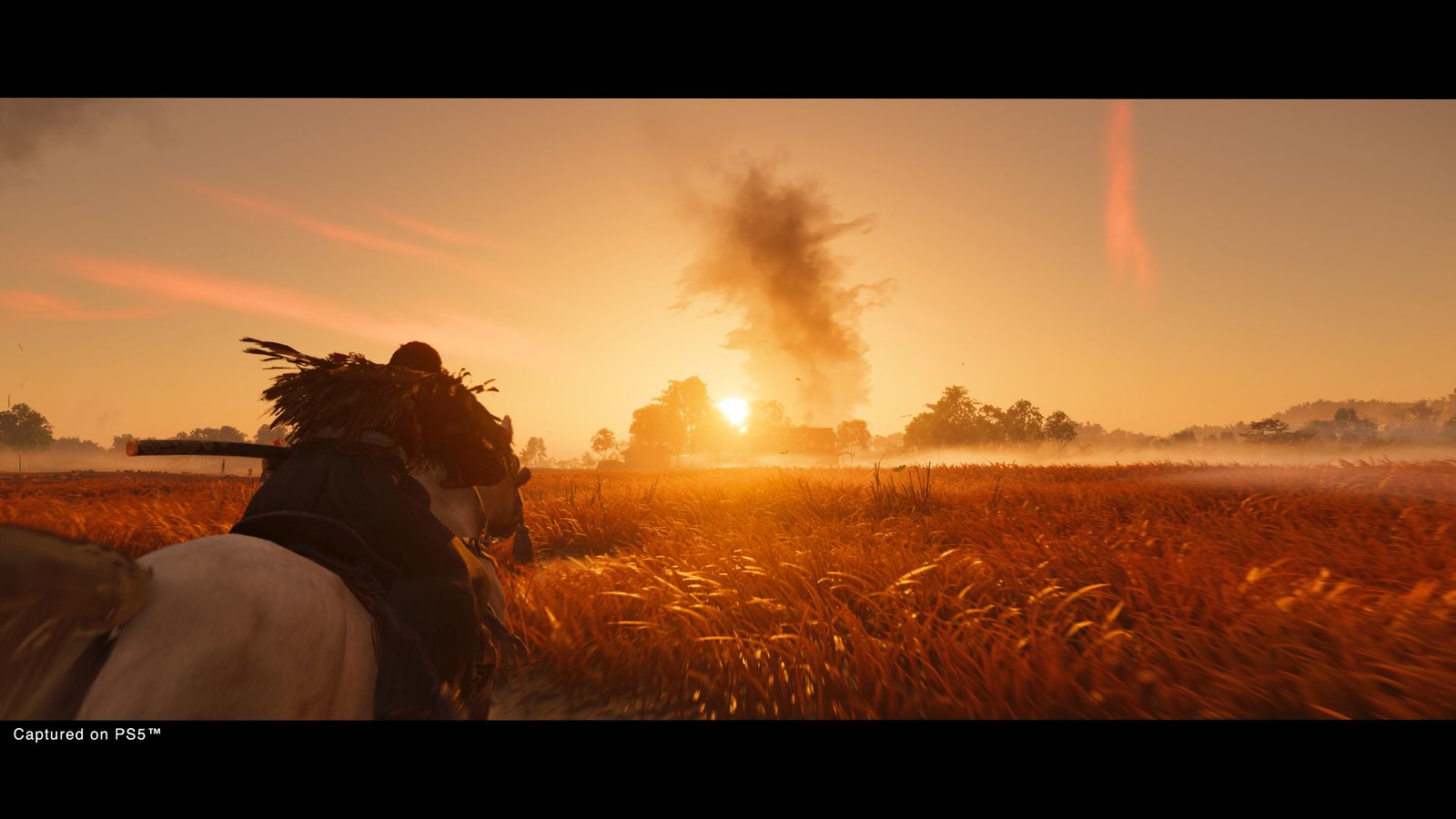
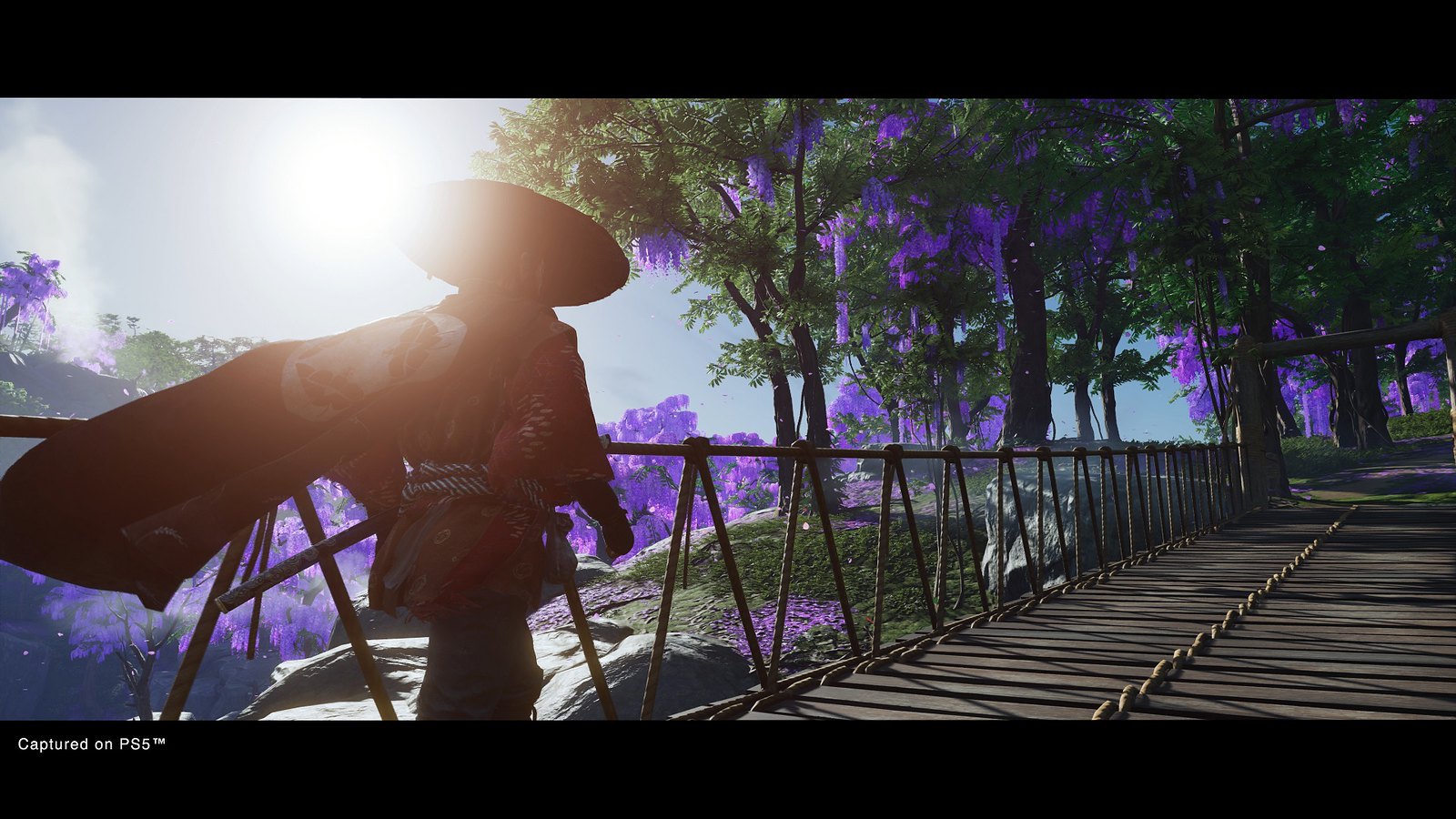
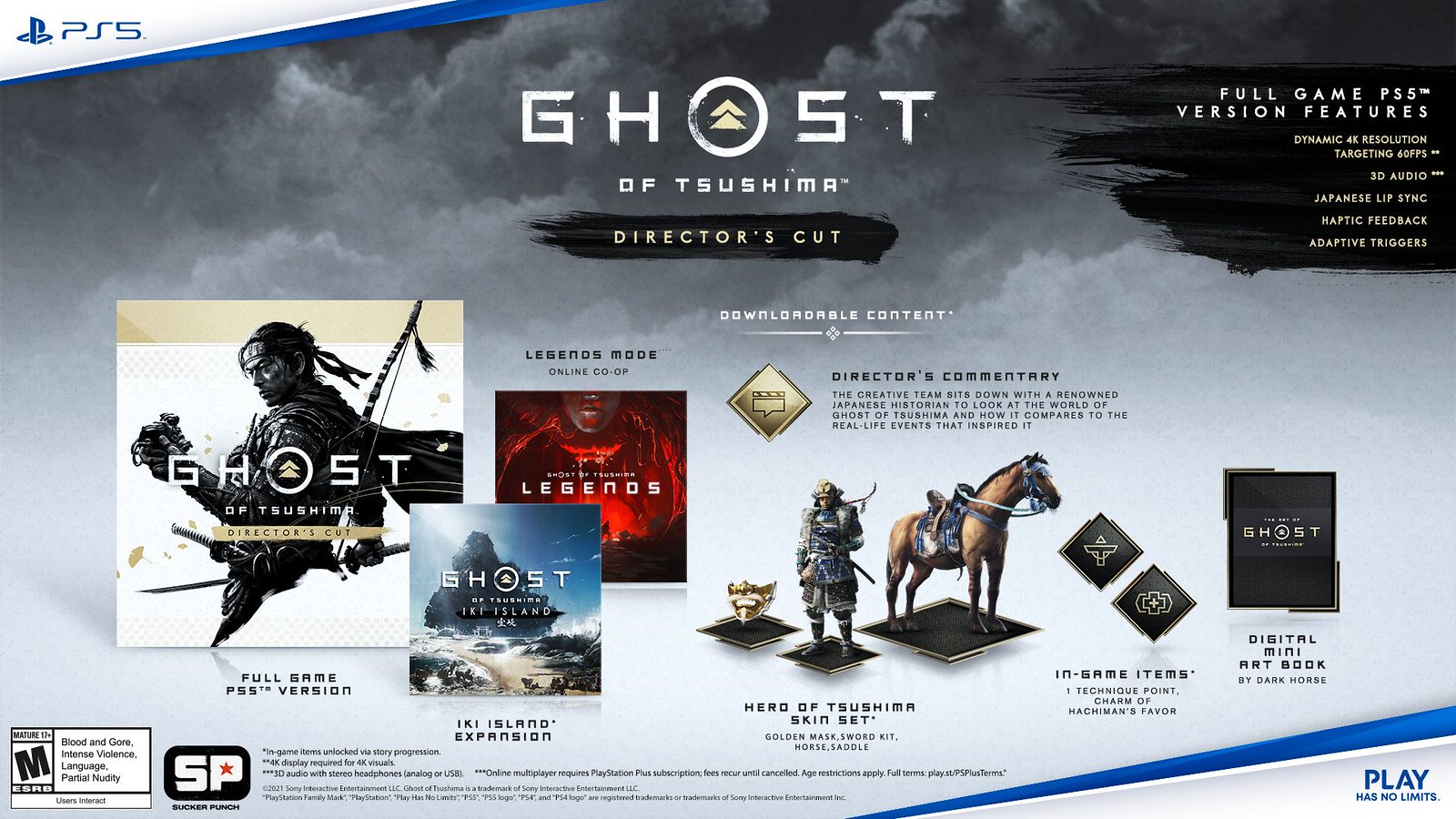
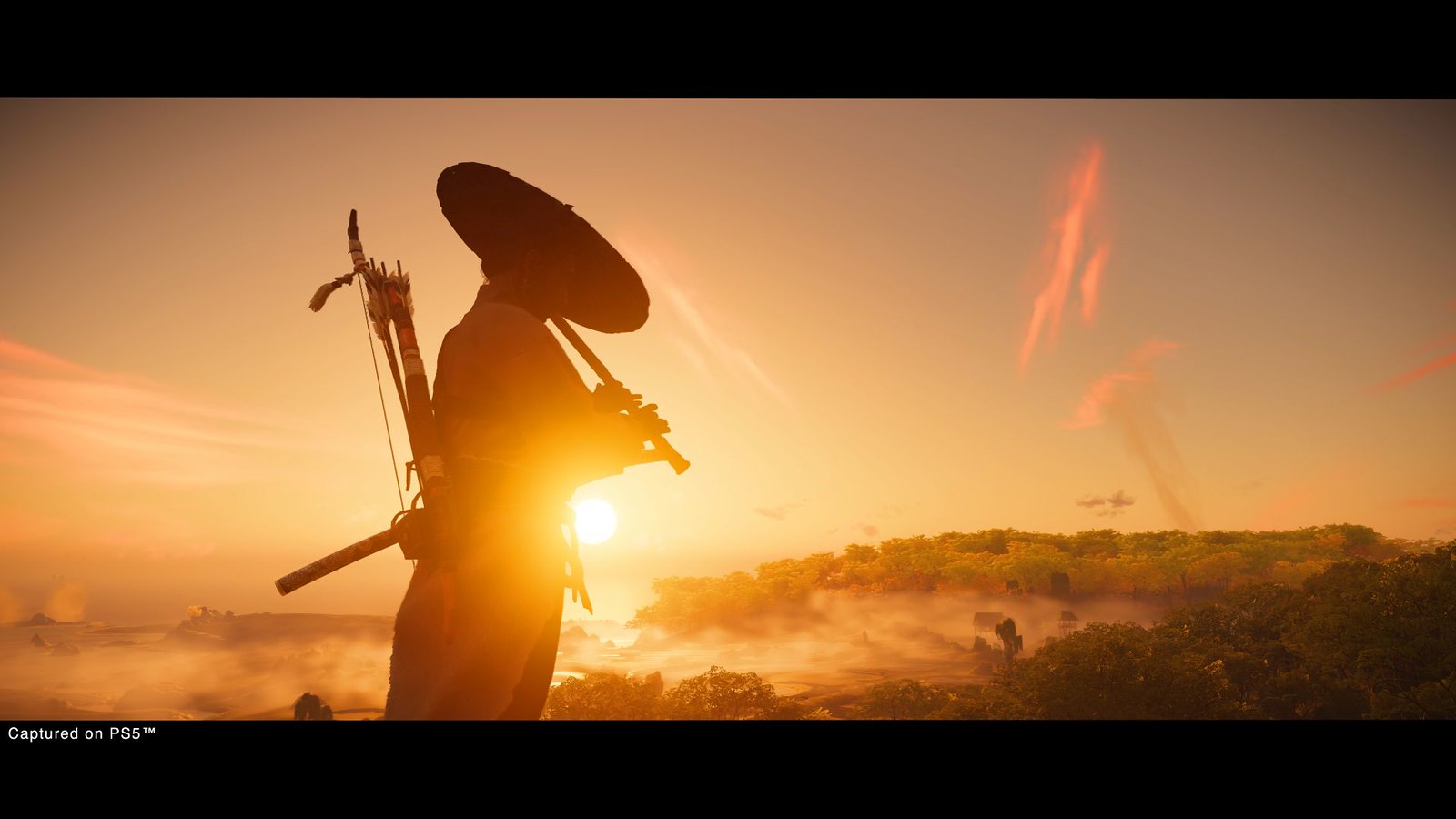
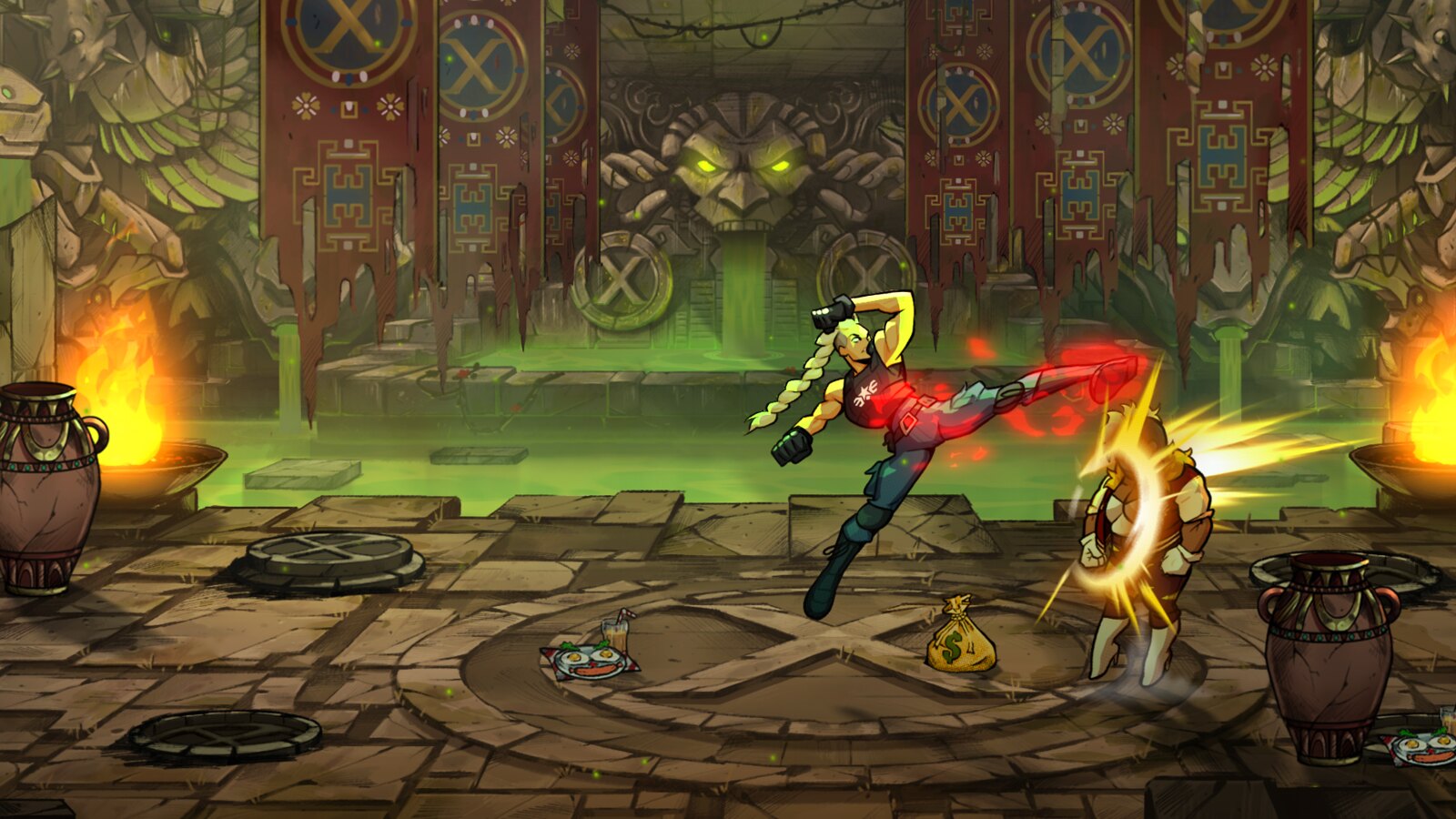

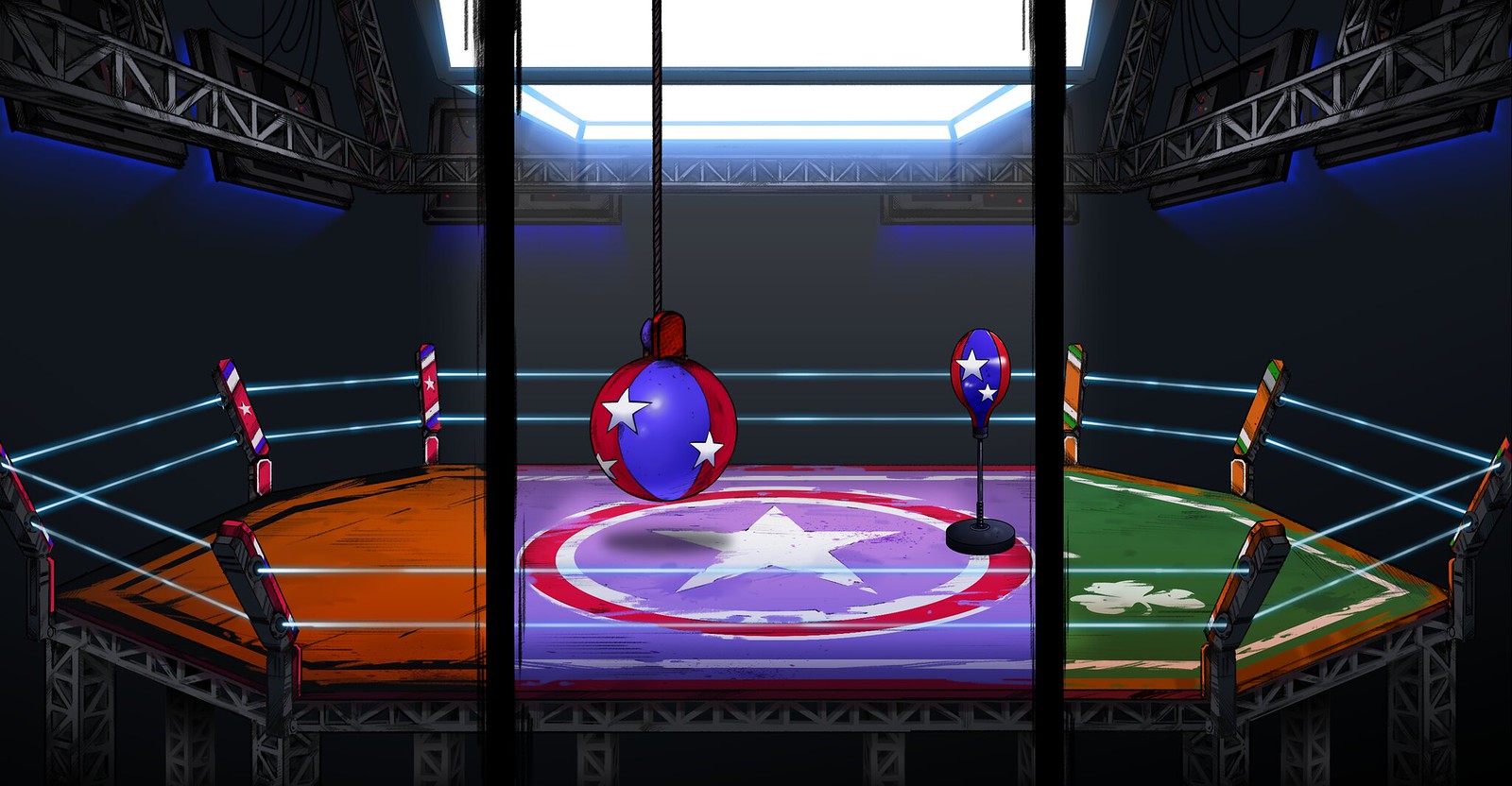
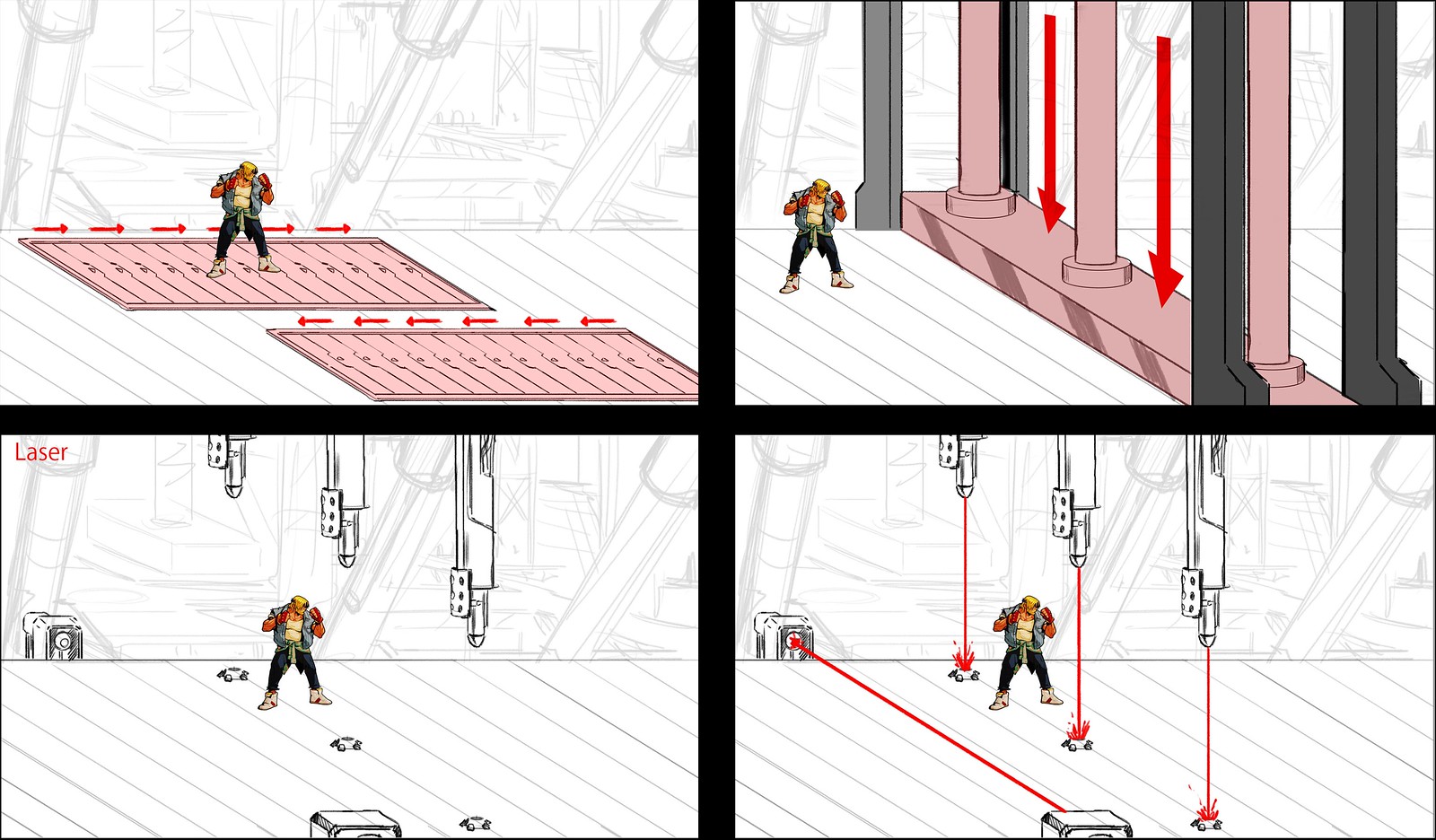


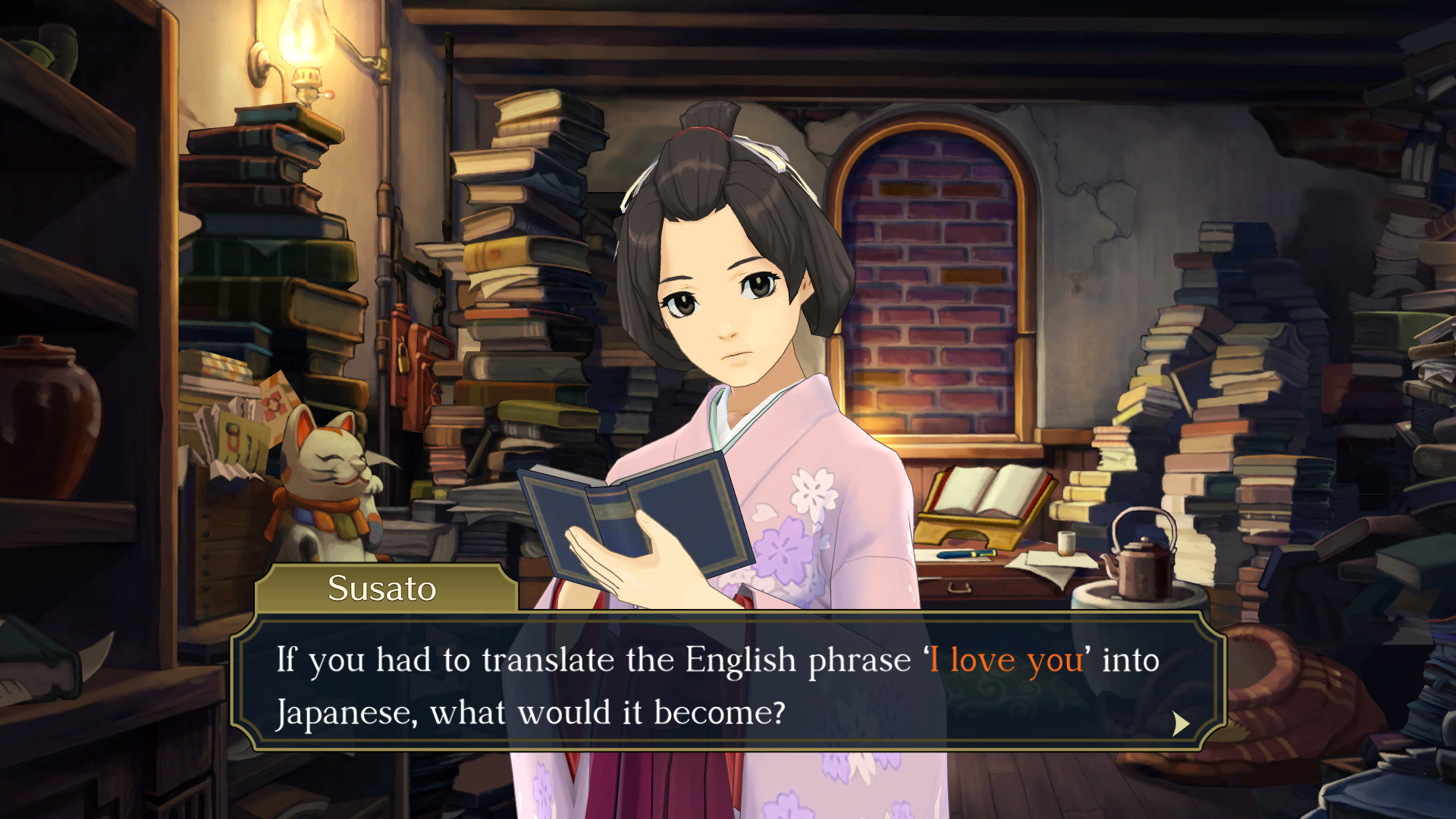
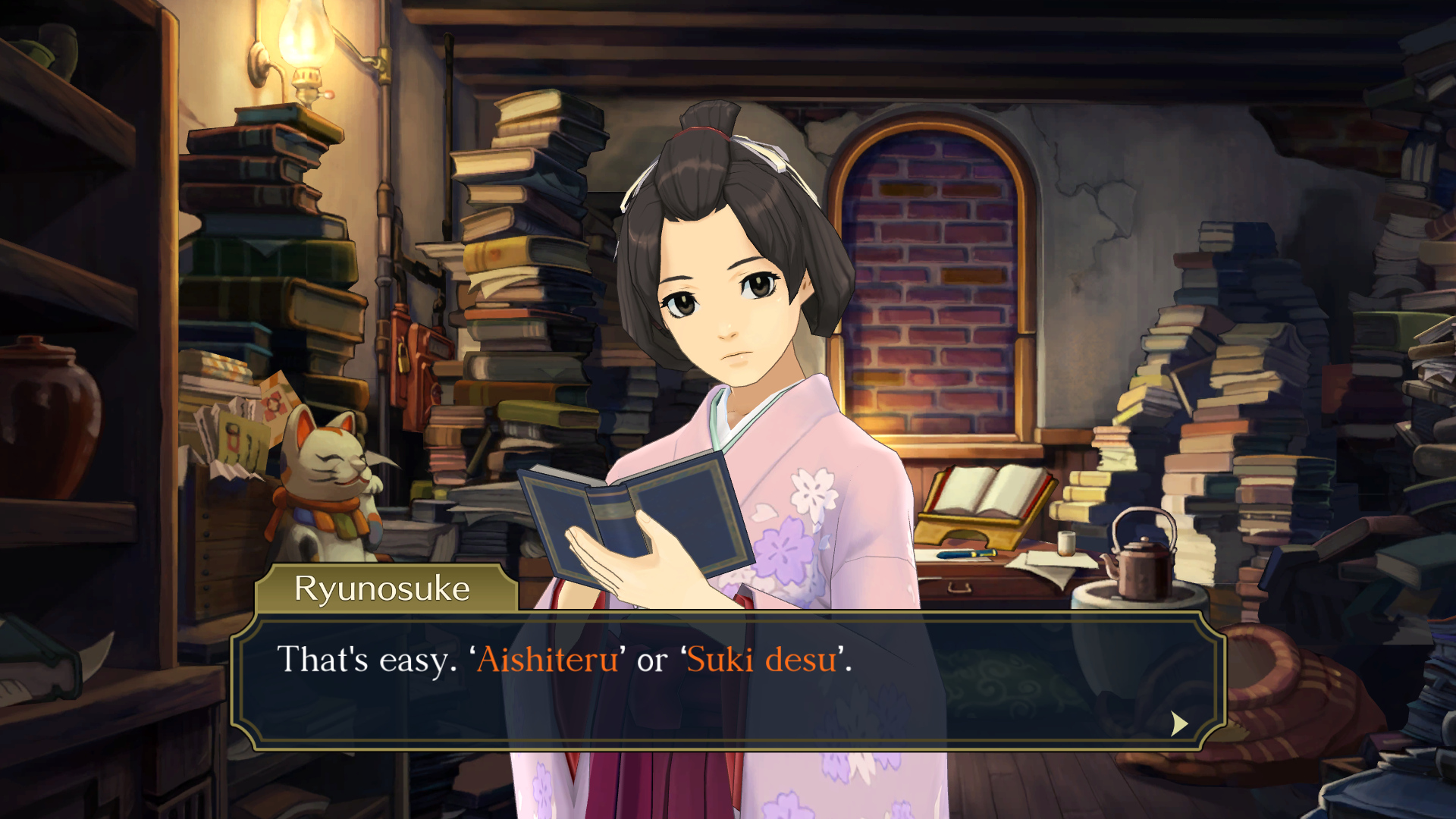

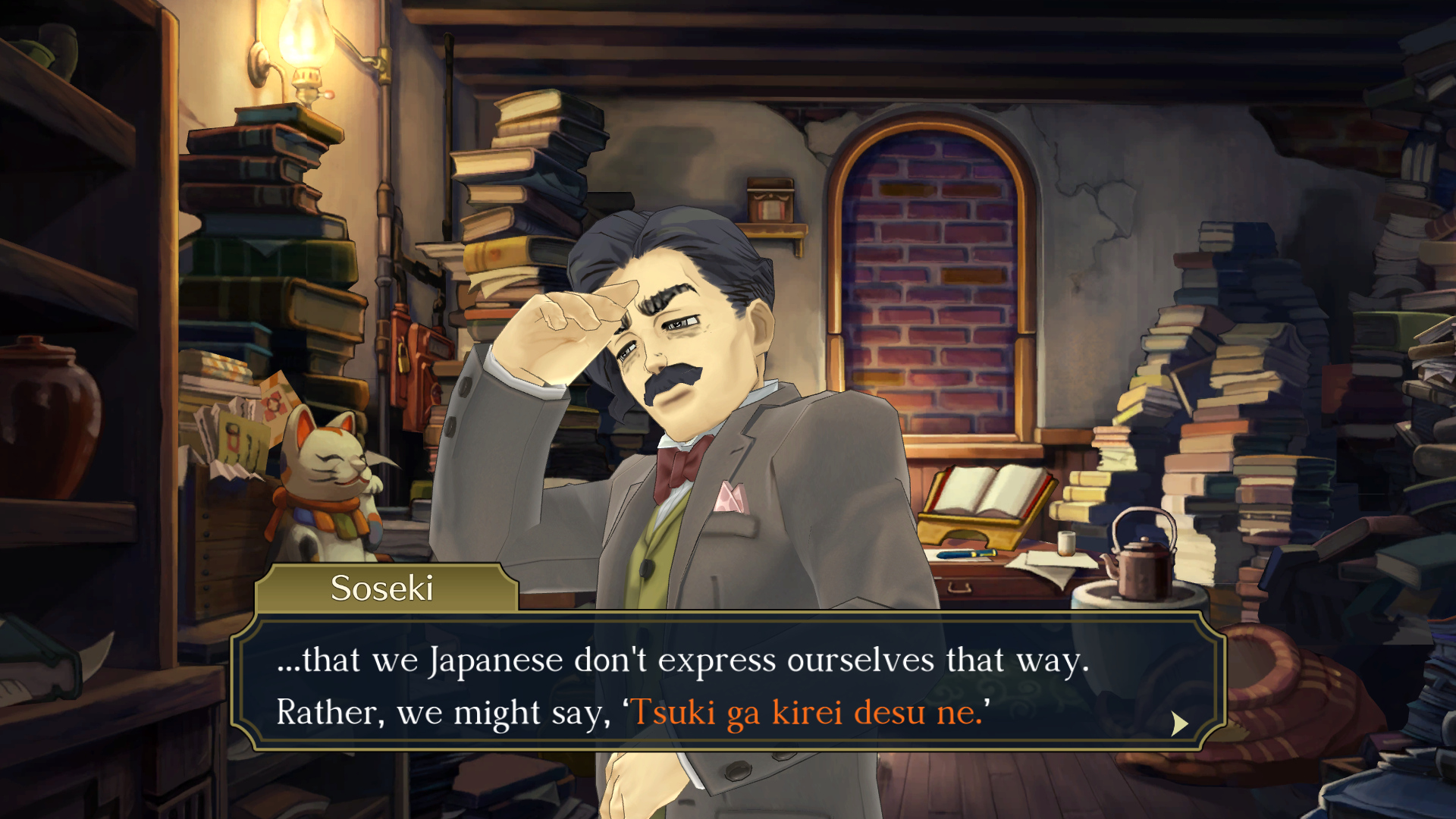

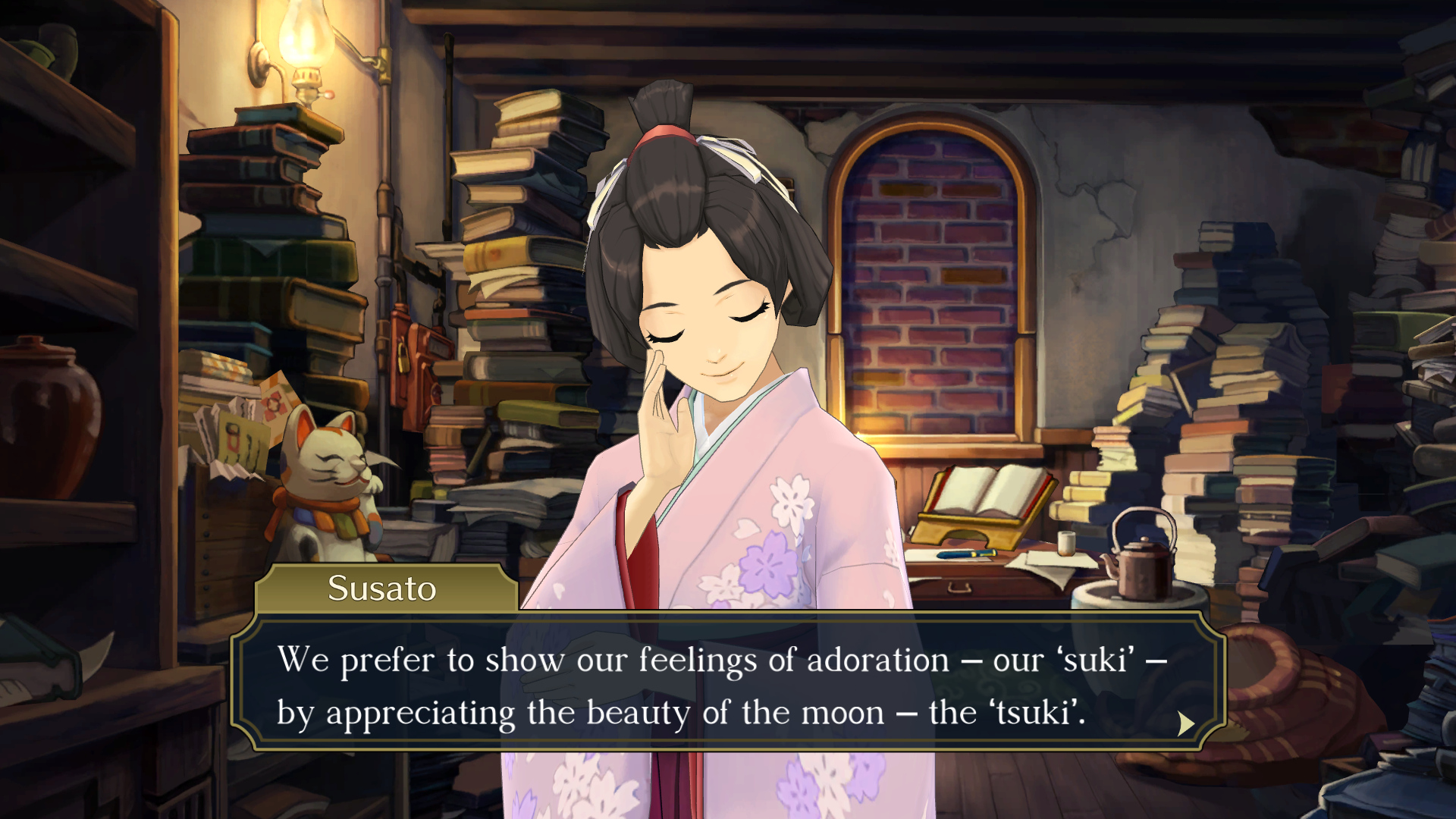

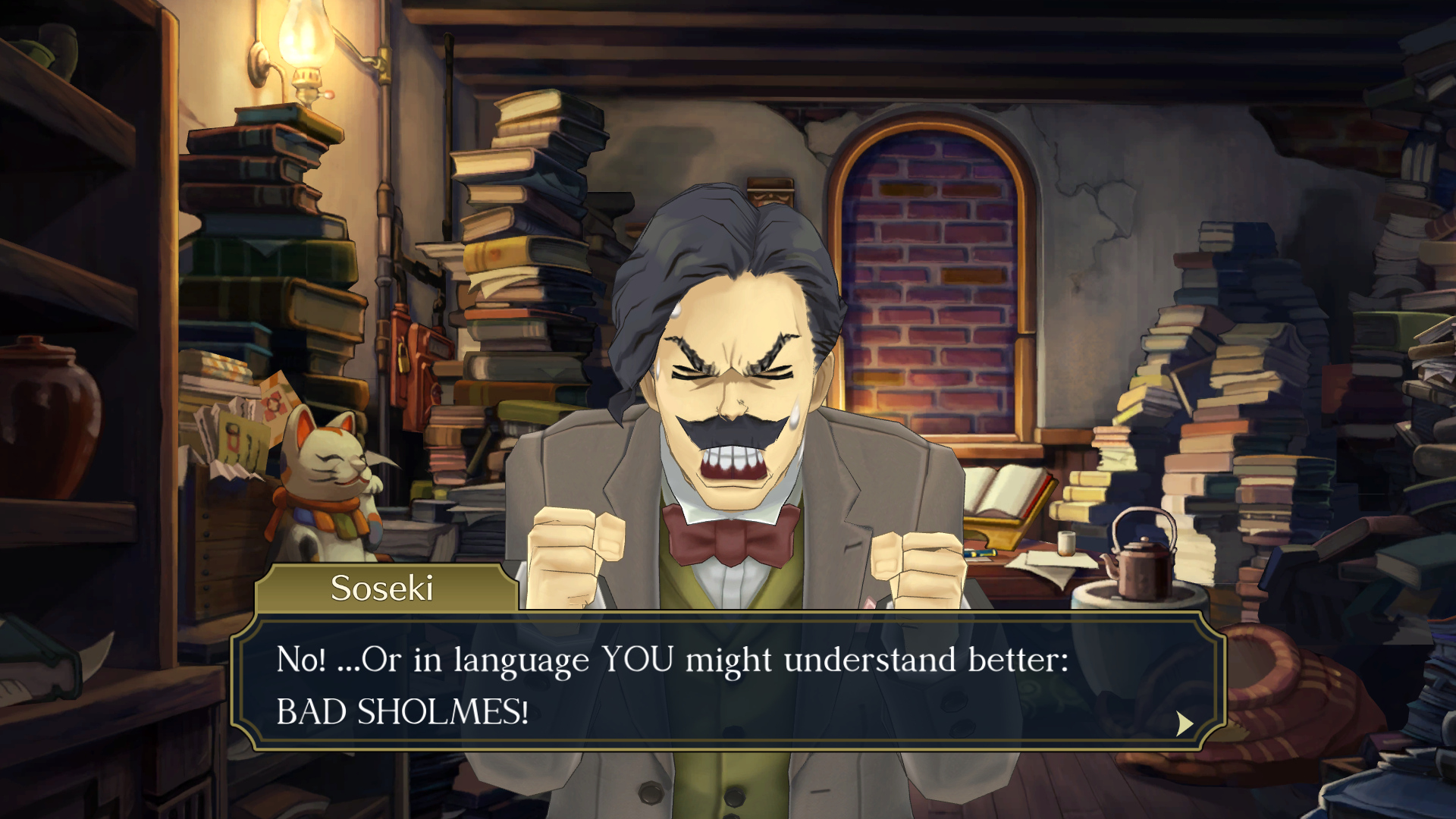
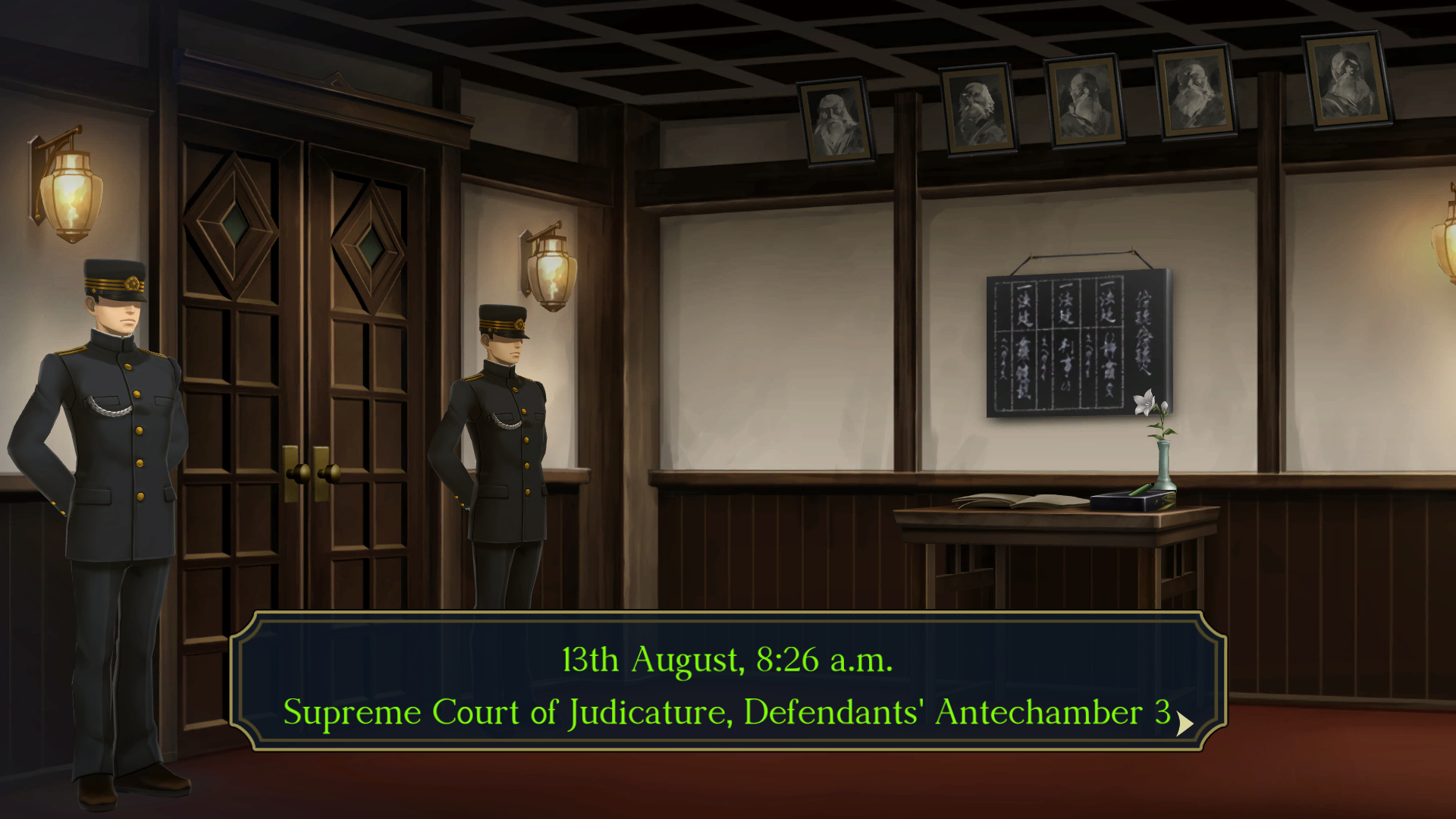


No comments:
Post a Comment